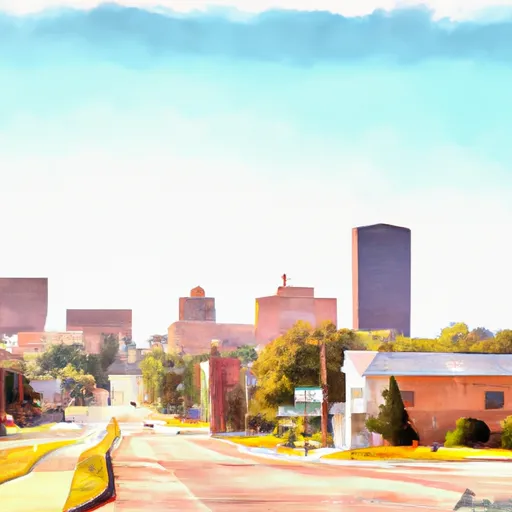-
 Snoflo Premium
Snoflo Premium
Get unlimited access to all our content
With no Ad interruptions! - Start Your Free Trial Login with existing account
Sturkie
Eden Index
Climate
8.2
•
Recreation
1.8
•
Community
•
Safeguard
3.9/10

Sturkie, Arkansas is a small unincorporated community located in Fulton County. It experiences a humid subtropical climate with hot, humid summers and mild winters. Average temperatures range from the low 90s°F (32°C) in summer to the mid-40s°F (7°C) in winter. The area receives an average annual precipitation of around 50 inches, with the wettest months being March and May, and the driest months being August and September.
Situated near the Spring River, Sturkie benefits from a hydrological system that includes numerous creeks, streams, and springs. The presence of these water sources offers opportunities for recreational activities like fishing, canoeing, and kayaking. Anglers can try their luck catching species such as smallmouth and largemouth bass, catfish, and sunfish.
The natural surroundings of Sturkie provide an ideal setting for outdoor enthusiasts. The Ozark National Forest, located to the west, offers hiking and camping opportunities amidst picturesque landscapes. Additionally, nearby rivers and streams provide opportunities for wildlife observation and bird watching.
In conclusion, Sturkie, Arkansas experiences a humid subtropical climate with ample water resources and offers various outdoor recreation opportunities, making it an attractive destination for nature lovers seeking diverse activities in a serene environment.
What is the Eden Index?
The Snoflo Eden Index serves as a comprehensive rating system for regions, evaluating their desirability through a holistic assessment of climate health, outdoor recreation opportunities, and natural disaster risk, acknowledging the profound impact of these factors on livability and well-being.
Climate Health Indicator (CHI): 8.2
Sturkie receives approximately
1178mm of rain per year,
with humidity levels near 84%
and air temperatures averaging around
14°C.
Sturkie has a plant hardyness factor of
6, meaning
plants and agriculture in this region thrive during a short period during spring and early summer. Most
plants will die off during the colder winter months.
By considering the ideal temperature range, reliable water supplies, clean air, and stable seasonal rain or snowpacks, the Climate Health Indicator (CHI) underscores the significance of a healthy climate as the foundation for quality living.
A healthy climate is paramount for ensuring a high quality of life and livability in a region, fostering both physical well-being and environmental harmony. This can be characterized by ideal temperatures, reliable access to water supplies, clean air, and consistent seasonal rain or snowpacks.
Weather Forecast
Streamflow Conditions
Upper White
Area Rivers
Upper White
Snowpack Depths
Upper White
Reservoir Storage Capacity
Upper White
Groundwater Levels
Recreational Opportunity Index (ROI): 1.8
The Recreational Opportunity Index (ROI) recognizes the value of outdoor recreational options, such as parks, hiking trails, camping sites, and fishing spots, while acknowledging that climate plays a pivotal role in ensuring the comfort and consistency of these experiences.
Access to outdoor recreational opportunities, encompassing activities such as parks, hiking, camping, and fishing, is crucial for overall well-being, and the climate plays a pivotal role in enabling and enhancing these experiences, ensuring that individuals can engage in nature-based activities comfortably and consistently.
Camping Areas
| Campground | Campsites | Reservations | Toilets | Showers | Elevation |
|---|---|---|---|---|---|
| Cane Creek State park | None | 257 ft | |||
| Acadiana Park | 75 | 42 ft | |||
| Pine Bluff Aresenal Military | None | 243 ft | |||
| Opelousas City RV Park | 67 | 64 ft | |||
| Rising Star | None | 196 ft | |||
| Chemin - A - Haut State Park | None | 125 ft | |||
| Saracen Trace RV Park | 52 | 217 ft | |||
| Crossett RV Park | 119 | 68 ft | |||
| Trulock - Arkansas River | 15 | 195 ft | |||
| Lakeview Park - Mexico | None | 810 ft |
Nearby Ski Areas
Catastrophe Safeguard Index (CSI):
The Catastrophe Safeguard Index (CSI) recognizes that natural disaster risk, encompassing floods, fires, hurricanes, and tornadoes, can drastically affect safety and the overall appeal of an area.
The level of natural disaster risk in a region significantly affects safety and the overall livability, with climate change amplifying these risks by potentially increasing the frequency and intensity of events like floods, fires, hurricanes, and tornadoes, thereby posing substantial challenges to community resilience and well-being.
Community Resilience Indicator (CRI):
The Community Resilience Indicator (CRI) recognizes that education, healthcare, and socioeconomics are crucial to the well-being of a region. The CRI acknowledges the profound impact of these elements on residents' overall quality of life. By evaluating educational resources, healthcare accessibility, and economic inclusivity, the index captures the essential aspects that contribute to a thriving community, fostering resident satisfaction, equity, and social cohesion.

